
Bretby is a village and civil parish in the south of Derbyshire, England, north of Swadlincote and east of Burton upon Trent, on the border between Derbyshire and Staffordshire. The population of the civil parish as of the 2011 census was 893. The name means "dwelling place of Britons". On the A511 road, there is a secondary settlement, Stanhope Bretby, which was the site of Bretby Colliery.
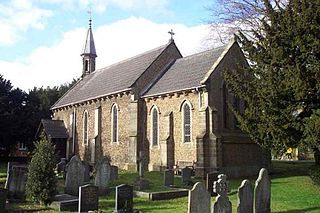
Alkmonton is a village and civil parish in the Derbyshire Dales district of Derbyshire, England, roughly between Uttoxeter and Derby. The parish had a population of 75 at the 2001 census and it remained less than 100 in 2011. Details are included in the civil parish of Cubley, Derbyshire.

Stainsby is a small village in Derbyshire, England. It is near Chesterfield and Bolsover, and the villages of Heath and Doe Lea. The village population is included in the civil parish of Ault Hucknall. The M1 motorway skirts past the village. In 1870-72 it had a population of 101.

Coton in the Elms is a village and parish in the English county of Derbyshire. At 70 miles (110 km) from the coast, it is the one of the furthest places in the United Kingdom from coastal waters. The population of the civil parish as of the 2011 census was 896. It is located 5 miles (8.0 km) southwest of Swadlincote and 6 miles (9.7 km) south of Burton upon Trent.

Sutton Scarsdale Hall is a Grade I listed Georgian ruined stately home in Sutton Scarsdale, just outside Chesterfield, Derbyshire.
Newton Solney is a small village and civil parish in South Derbyshire, England, located about two miles (3 km) from the East Staffordshire border, near to Burton upon Trent. The population of the civil parish as of the 2011 census was 659. Its nearest neighbour is Repton, situated about two miles (3 km) to the northeast.
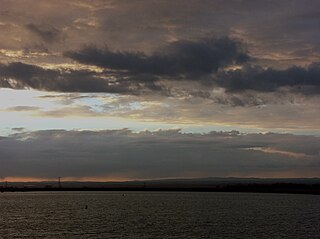
Foremark is a hamlet and civil parish in the South Derbyshire district of Derbyshire, England. It contains Foremarke Hall, a medieval manor house which now houses Repton Preparatory School; and part of Foremark Reservoir.
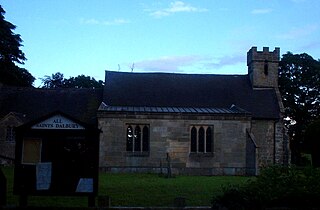
Dalbury Lees is a parish in south Derbyshire. The population of the civil parish as taken at the 2011 Census was 306. It is about six miles (10 km) from both Burton-on-Trent and Derby and just under four miles (6 km) from Egginton. The parish contains the villages of Dalbury and Lees which are just under 2 miles (3.2 km) apart from one another. Dalbury Lees has been known as Dalbury and as Dalbury with Lees, but Dalbury Lees is the preferred term

Sutton-on-the-Hill is a parish in south Derbyshire eight miles (13 km) west of Derby. The population of the civil parish taken at the 2011 Census was 123. The village is widely spread out and contains both a church and a chapel. It was described as "a parish, with two townships and a hamlet" in the 1870s. Now it has no shop or post office and limited public transport links. Sutton on the Hill is primarily an agricultural area with former dairy farms at either end of the village, along with the Sutton Estate Farm. The village school has been converted into a village hall and has a nursery school for the local villages.

Cubley is a parish of two closely linked villages six miles (10 km) south of Ashbourne in Derbyshire. Great Cubley and Little Cubley are known collectively as Cubley. The parish church of St Andrew is roughly equidistant from the two, but is formally in Great Cubley. The church is Grade I listed. The population of the civil parish taken at the 2011 Census was 232.

Linton is a settlement and civil parish in South Derbyshire, England, 5 miles south east of Burton-on-Trent. The population of the civil parish taken at the 2011 Census was 2,303.
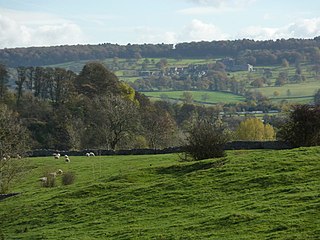
Conksbury is the site of a deserted medieval settlement between Over Haddon and Youlgreave in Derbyshire, England.
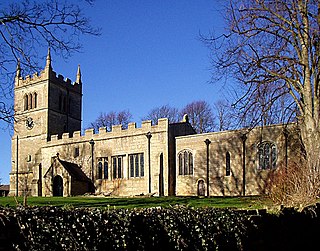
Scarcliffe is a village and civil parish in the Bolsover district of Derbyshire, England. It is sometimes called Scarcliffe with Palterton. The population of the parish at the 2001 UK Census was 5,211, increasing to 5,288 at the 2011 Census.

Sutton cum Duckmanton is a civil parish in Derbyshire, England, between Bolsover and Chesterfield in the district of North East Derbyshire.

Shottle is a village approximately 3 miles (4.8 km) south of the market town of Wirksworth in Derbyshire. The population of the civil parish at the 2011 Census was 266.

Smisby is an ancient manor, civil parish and small village in South Derbyshire, England. It is 4 miles (6.4 km) from Melbourne and near the Leicestershire border and the town of Ashby-de-la-Zouch. The village including the outlying farms and houses has a population just over 200 that occupies some 110 properties. The population at the 2011 Census had increased to 260.
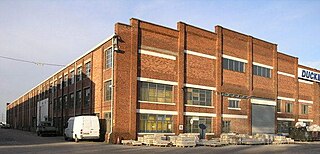
Duckmanton is a village within the civil parish of Sutton cum Duckmanton, in North East Derbyshire, between Bolsover and Chesterfield. Duckmanton is a long scattered village, running north and south, usually designated Long, Middle and Far Duckmanton, of which Middle Duckmanton is 4 miles (6.4 km) east from Chesterfield and 2.5 miles (4.0 km) west from Bolsover.
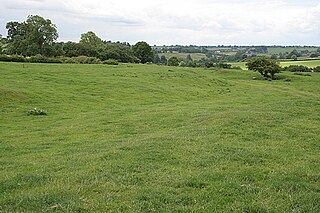
Hungry Bentley is a deserted medieval village and civil parish in the Derbyshire Dales district of Derbyshire, England, between Uttoxeter and Derby. The site is a scheduled monument and has been called the best "depopulated settlement" in Derbyshire. The name Bentley is said to mean a clearing with bent grass. The more unusual appellation of "Hungry" is said to refer to the poor quality of the land and the local inhabitants' poor food.

Hermeston Hall is a manor house near to the villages of Oldcotes and Langold, and within the parish or Hodsock, northwestern Nottinghamshire, England. It is located in a lane just off the A60 road, just south of the village of Oldcotes on the road to Langold.
Sutton cum Duckmanton is a civil parish in the North East Derbyshire district of Derbyshire, England. The parish contains eleven listed buildings that are recorded in the National Heritage List for England. Of these, one is listed at Grade I, the highest of the three grades, one is at Grade II*, the middle grade, and the others are at Grade II, the lowest grade. The parish contains the villages of Sutton Scarsdale and Long Duckmanton and the surrounding countryside. The most important building is Sutton Scarsdale Hall, a ruined country house, which is listed together with associated structures. The other listed buildings consist of a church, houses, farmhouses and farmbuildings, and an ice house.



















